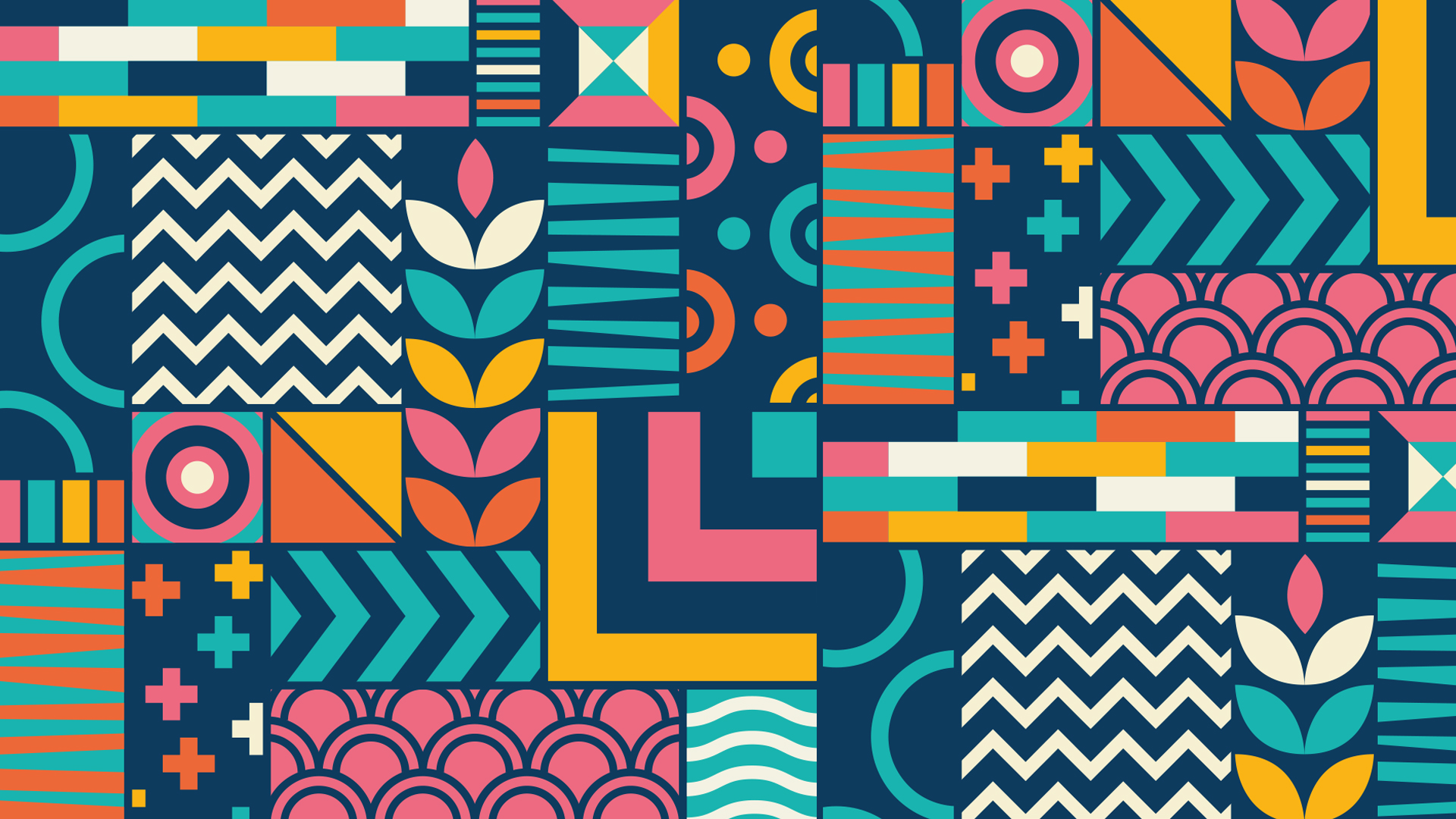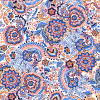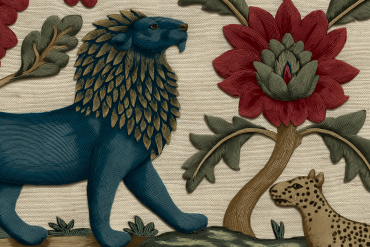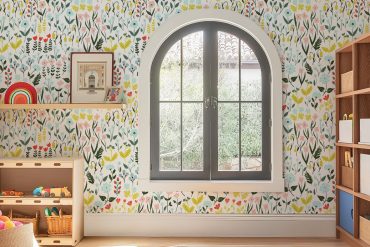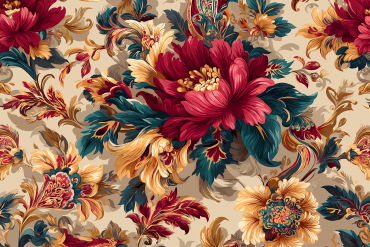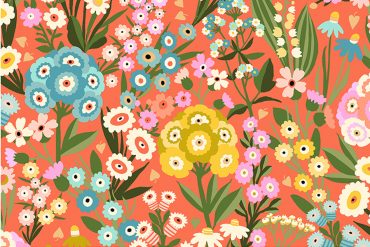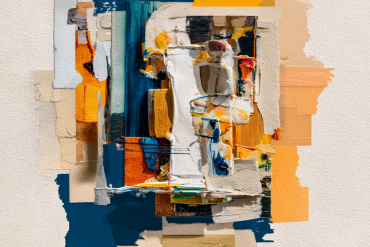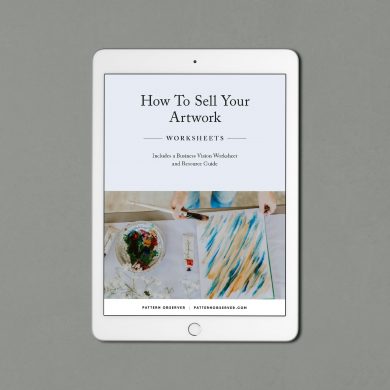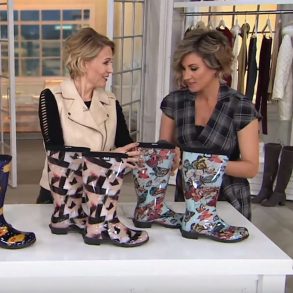Meet Faye Brown, with 25 years of experience in design and motion graphics, Faye has worked on everything from TV and film title sequences in London to building her own successful freelance branding practice in the English countryside. She’s also a passionate educator, teaching popular classes on Skillshare covering typography, branding, color theory, and creative business development. Her journey from employee to freelancer to educator gives her unique insights into optimizing creative workflows at every stage of a design career.
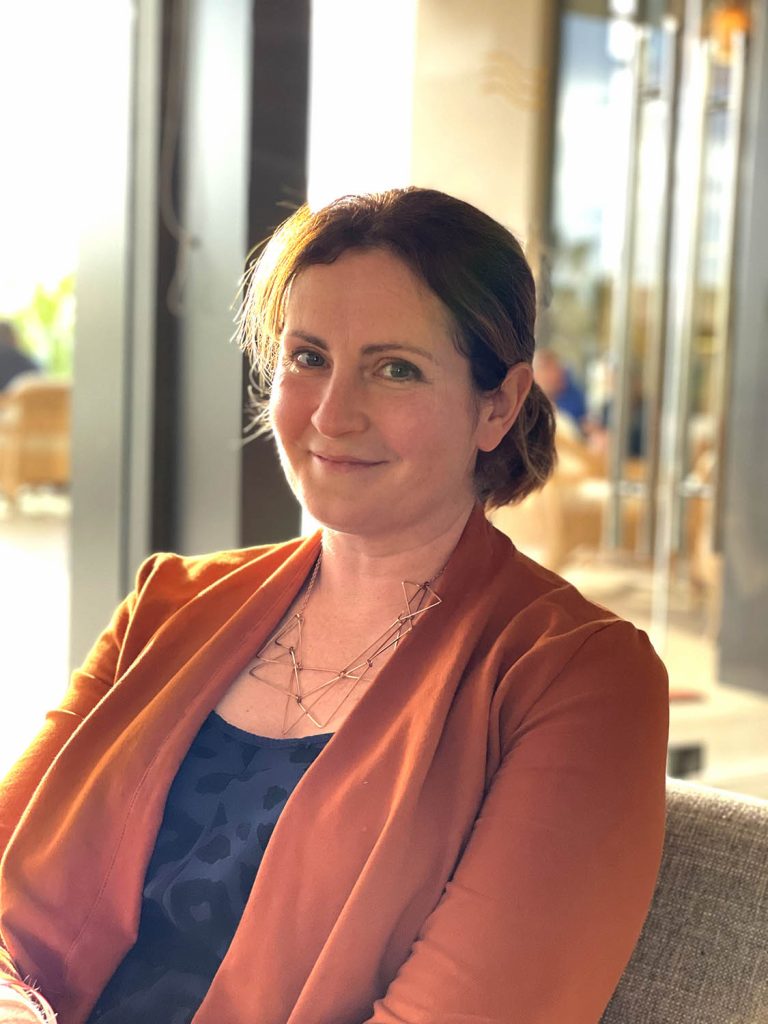
You teach courses on color theory, typography, and branding fundamentals. How do you balance teaching timeless design principles with incorporating new tools and technologies into your workflow?
That’s a great question, especially in today’s world where new apps and programs are coming out every month. If I go back to some of my early Skillshare classes, they are pretty out of date in terms of tools, although the fundamental design advice can be, like you say, timeless. I am a bit of a traditionalist, although I think particularly with AI, it’s important to stay in the know and on top of new tech, whether you wholeheartedly agree with it or not. I teach a course for older kids called Summer of Design, which has been running for a few years now, but I really feel I should update with a new module all about AI and the impact it will have on design – the good, the bad, and the ugly! I think it’s also a balance to not overload students with new tools for the sake of it… there are so many AI tools that are coming out now and some will inevitably stick more than others so I’m careful not to send students down a dead end. One of my favourite online tools is coolors.co. It’s great for coming up with color palettes, especially if you’ve already done some work on main colours and need some secondary or accent colours.
A good talking point is probably Canva. When Canva first came out I was a bit of a design snob and hated the thought of people using Canva and calling themselves designers! Now I see its potential as an intuitive tool and it’s super useful for my clients who are producing social media templates or presentations. So I leaned into it and now offer my clients a bit of a tutorial in Canva so they can use their brand elements effectively without the larger costs of an Adobe subscription. I think we need to look at AI similarly – it’s not going anywhere, so lean into it but with integrity.
Your classes often focus on helping people overcome creative overwhelm. What’s your approach to breaking down complex creative processes into manageable, actionable steps?
In terms of individual project overwhelm, when I first started my own business, I would jump straight into the design phase… sometimes these designs fell a bit flat with the client. I had skipped way too far ahead. Now I begin by conducting a brand consultation or questionnaire, which allows me to get to know the business, its values, target audience, and future plans. I’ll then move onto a mood board of existing styles, including some potential colour palettes and typography. This has made the creative process so much smoother for both me and my clients. I feel more in control and they feel more part of the process. When I then present them with the initial logo idea, 9 times out of 10 the client is really happy with minor tweaks.
Breaking down the process can be applied to most design projects – starting with a discovery or exploration stage (mood boards, spider diagrams, or brainstorming in a team) Once I have the beginnings of a direction, a mood board or style board can be a useful reference to get the client on board or to focus the approach. And then I move into the design phase, which is my favorite part, but much more streamlined after doing the research and planning steps.
In a recent project, I rebranded a local restaurant called The Bere. There were many factors to consider with this project, including making sure the interior also worked alongside the branding. I started with a general mood board that was then shared with an interior design consultant who helped my client on that side of the project. Making sure all parts of the creative were aligned was essential for the success of the project and the branding.
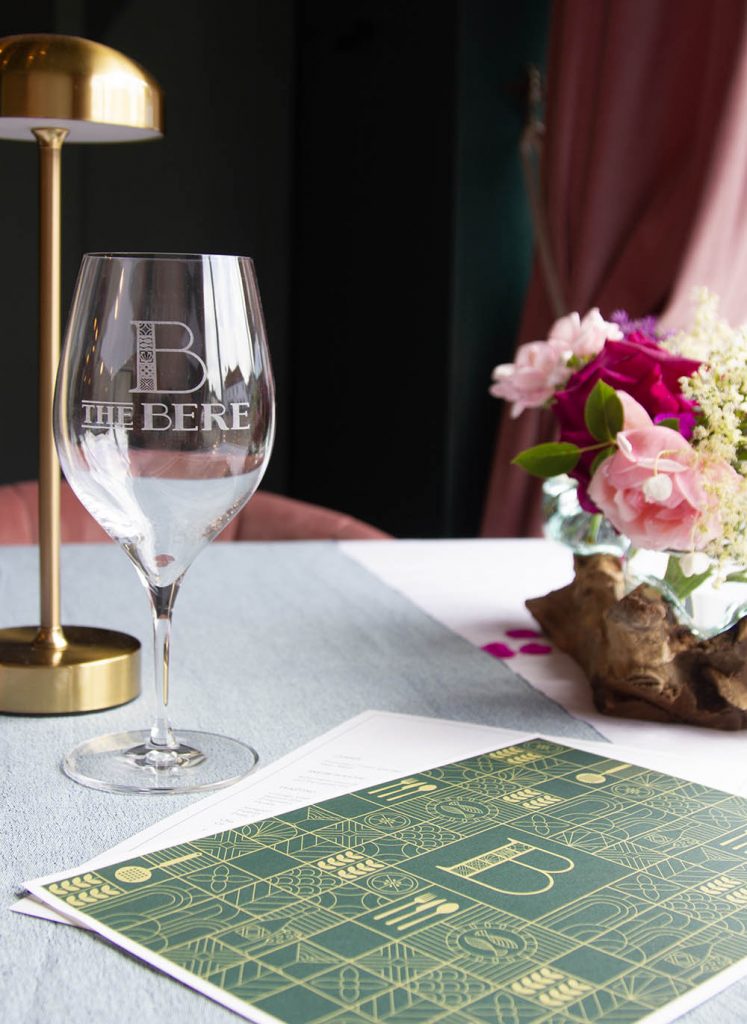
What advice would you give to pattern designers who feel scattered across multiple platforms, projects, or creative directions? How can they streamline their focus?
It’s so hard keeping up with all the platforms and dedicating enough time to each. I remember about 10 years ago I had work on Spoonflower, Society 6, Etsy, Creative Market, Thortful, Red Bubble, and I iStock Photo. I was so busy thinking I needed to have a presence on each I didn’t really make any of them a huge success. Success with streamlining depends on what time you have available. I’d start by looking at your figures and working out which ones are working for you at the moment. Focus on 2-3. Sure, you can have work on other platforms, but if you are feeling overwhelmed, just take the pressure off and focus on a few you are either most enjoying or making decent money from. Similarly with projects… I go in phases, but at one point I was juggling about 10 projects at one time and my brain was fried… I wasn’t doing a great job on any of them because my mind was so scattered. I now try really hard to only have 3 projects running concurrently. It doesn’t always work out, but I found, for me, that’s my sweet spot.
If you are juggling projects with personal work I’d try to divide up your week and set your hours so maybe you decide 3 days a week is for client work and 2 days a week you will focus on building your print on demand work as an example. We all have different ways of working, but I find this much more productive than spending a quick 25 minutes on a personal project and then switching to a client job for 2 hours and then going back to some other creative venture. It’s very much personal preference though, our minds are wired differently and some people thrive in chaos, some people need a lot more structure and time planning. I have also used the pomodoro technique in the past where I will focus on something for 25 or 55 minutes and then take a 5 minute break.
How are you using AI in your design business today? Are you planning on implementing it in other areas of your creative practice or business?
I use ChatGPT most days to help me write posts. I also use it to brainstorm. I’m currently developing a new course and in-person workshop called Making Brand Sense, where we explore each of the senses with some fun exercises to get to the soul of our businesses. ChatGPT has helped me develop some of the initial ideas I had for the exercises and structure the course. I often use it to help me come up with creative names for colors too! I give each of my clients a brand board at the end with their color palette and values. ChatGPT is great for coming up with color names relevant to the brand values and mission.
I’ve been exploring other AI tools more with mixed success. Like asking it to come up with a moodboard for projects. I’ve found the prompts have to be so good for this to be successful. I also use it to come up with mockups for some designs, I’ve been really impressed with those. But there’s still a little niggle I have about this in that somewhere, someone’s photography will no doubt have been ripped off to create those images.
I have big concerns over artists’ copyright and AI, so I’m holding back slightly with some of the ways I could use it. I’m exploring it a lot visually, but holding back from using it professionally. Take this image using the simple prompt ‘create an image of a repeating pattern including mushrooms and rabbits’ in Adobe Firefly. It’s pretty impressive, but where is it drawing its reference from and I’m slightly concerned about the bottom left rabbit with 3 ears and one with a mushroom on its head! I heard a stat that AI is doubling its power every 3.3 months. It’s one of those technologies that I feel we need to be familiar with so we don’t get left behind. Who’s to say where AI will be in 5 or 10 years? Disney and Universal are suing Midjourney over alleged copyright infringement of their characters – I think this might be the forerunner to some more stringent rules on AI and copyright. I feel a lot of creatives are hesitant to use AI because of the ambiguity around copyright, but I feel that might be clearer in the next year or so.
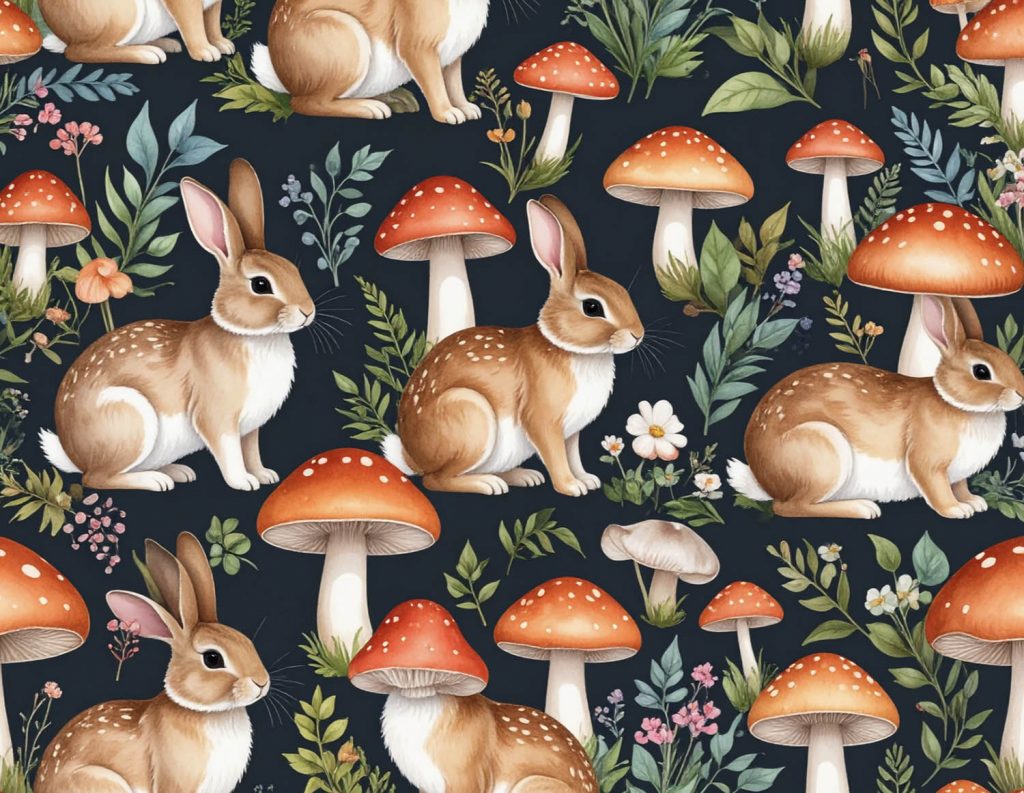
What role do templates, systems, or reusable elements play in your design process? How do you maintain efficiency without sacrificing creativity?
I have templates for my proposal documents now. In the early days, I would create a new proposal for each new client, whereas now I will start with my template and edit so it’s specific to them with relevant design examples. This has saved a lot of upfront time. Also, my brand consultation exercise workbook is set, and I’ll just go in and tweak a bit of the wording for individual clients. For the initial moodboards, I will generally start fresh each time, but can draw on previous ones if the projects have similar aesthetics and values. And the final brand boards generally follow the same layout each time, so these are easy to update for each project.
The research and discovery phase can follow a similar approach for each project, which makes my workflow a lot more efficient, whereas the creativity comes through with the design process itself.
What is a favorite time-saving tool or software feature that most designers don’t know about?
Probably using AI to create mock ups… previously, I have set up scenes to illustrate a client’s design in context or spent way too long in Photoshop trying to comp together a decent mockup. These mockups, using a pattern I designed, were done in ChatGPT within minutes. They are not perfect, but for a quick mockup to show how something could look in situ, they are much better than I could do in Photoshop. You might have to work on the prompt, as the more clear and concise the prompt, the better the result.
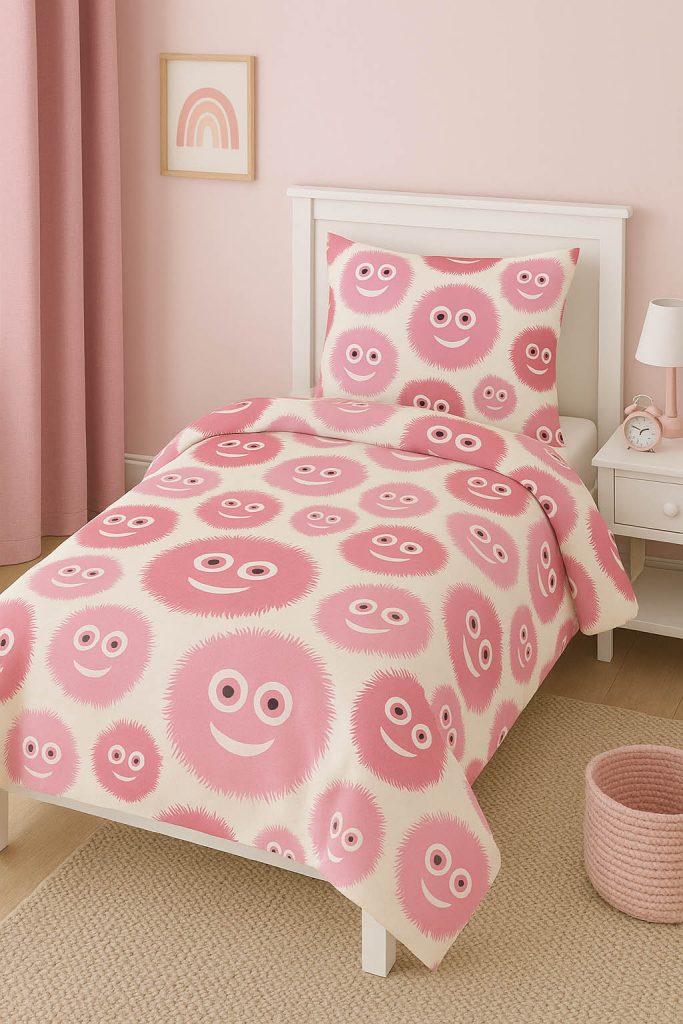
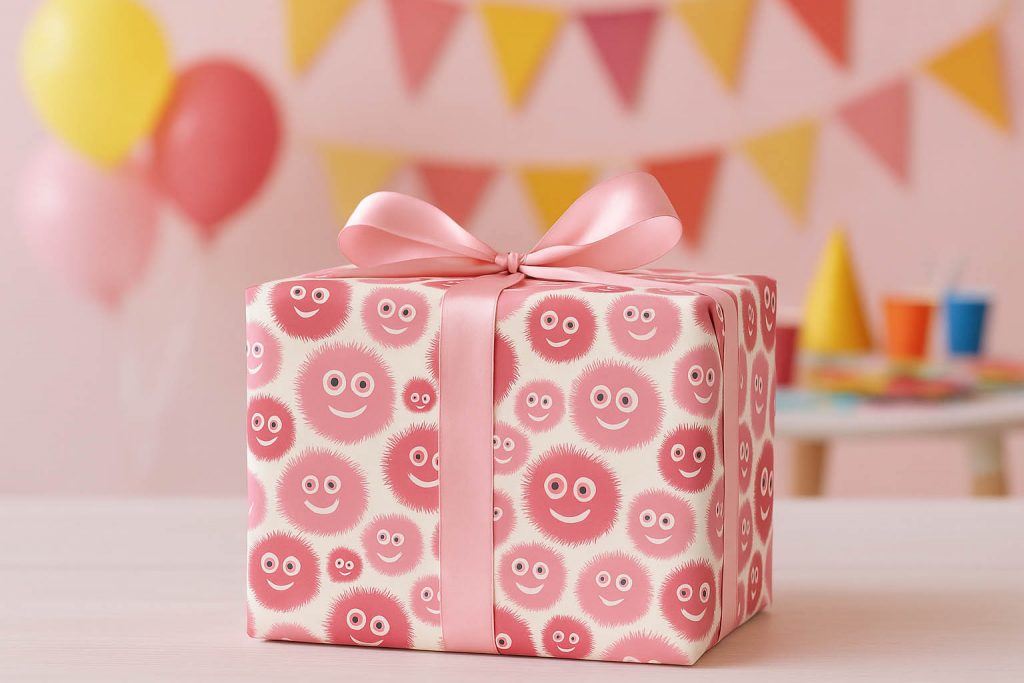
You’re managing client work, teaching, and raising a young family. What are your non-negotiable workflow systems that keep everything running smoothly?
I do often feel my brain has 100 tabs open, so while many clients and friends think I am very calm and organized, my brain is a hot mess of open tabs! I write a lot of lists which help. I’ve tried online productivity systems like Trello, but I love a paper diary… I like seeing my week as a whole and knowing exactly what’s coming up. I’ve tried to separate work and life commitments, but when dentist appointments and school events impact your usual working hours, the two have become intertwined. I have my Apple Calendar, which is a lifesaver too. I designed some big A2 3-monthly calendars because this is how I wanted to view my work commitments and couldn’t find anything similar that ticked all my boxes!
In terms of projects, I will try to set out firm deadlines and key dates for clients so they get back to me in a timely manner and I’m not hanging around waiting for feedback.
I also like taking school holidays off work to spend time with the children. I’m very upfront about this with clients when coming up with a schedule for their projects, and no one has ever had a problem with that. I try to live by a quote in one of my paper diaries – Measure success by how much fun you are having. When I feel the fun is slipping, I’ll try to reassess the workflow and how I can manage it more effectively.
This interview is part of the Textile Design Lab’s Summer of Creativity program, designed to help pattern designers optimize their workflows and build profitable design businesses. Whether you prefer traditional methods, AI-assisted workflows, or a hybrid approach, Faye’s insights on creative efficiency and collaboration will help you turn your pattern passion into sustainable profit.

